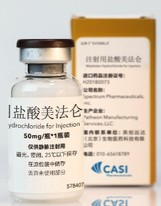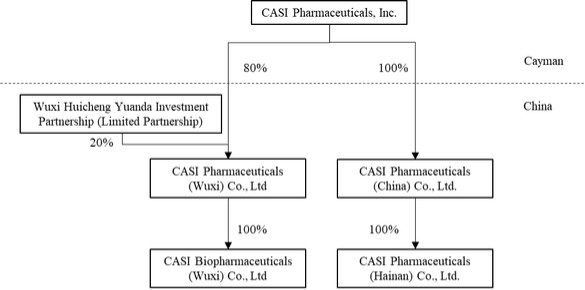of share options to Dr. He which consists of 400,000 shares time-based and 400,000 shares performance-based share options (the “CEO Plan”). As of April 21, 2023, there were a total of 884,332 ordinary shares remain available for issuance, and share options in respect of 3,391,285 ordinary shares under the Share Incentive Plans and the CEO Plan are outstanding, the weighted average exercise price of which is US$19.43.
The following paragraphs describe the principal terms of the Share Incentive Plans, which descriptions are subject to the terms of the Share Incentive Plans and are incorporated herein by reference.
Types of Awards. The Share Incentive Plans permit the awards of share options, stock appreciation rights, restricted or unrestricted stock awards, phantom stock, performance awards or any combination of the foregoing.
Unexercised Options. If any award, or portion of an award, under the Share Incentive Plans expires or terminates unexercised, becomes unexercisable or is forfeited or otherwise terminated, surrendered or cancelled as to any shares, or if any ordinary shares are surrendered to the company in connection with any award (whether or not such surrendered shares were acquired pursuant to any award), the shares subject to such award and the surrendered shares shall thereafter be available for further awards under the Share Incentive Plans.
Plan Administration. Our board of directors or a committee of the board of directors (the “administrator”) will administer the Share Incentive Plans. The administrator will have full power and authority to take all other actions necessary to carry out the purpose and intent of the Share Incentive Plans, including, but not limited to, the authority to: (i) determine the eligible persons to whom, and the time or times at which awards will be granted; (ii) determine the types of awards to be granted; (iii) determine the number of shares to be covered by or used for reference purposes for each award; (iv) impose such terms, limitations, restrictions and conditions upon any such award as the administrator deems appropriate, including, but not limited to, whether a share option shall be an incentive share option or a nonqualified share option, any exceptions to nontransferability, any performance goals applicable to awards, any provisions relating to vesting, any circumstances in which the awards would terminate, the period during which awards may be exercised, and the period during which awards will be subject to restrictions; (v) accelerate, extend, or otherwise change the time in which an award may be exercised or becomes payable and to waive or accelerate the lapse, in whole or in part, of any restriction or condition with respect to such award, including, but not limited to, any restriction or condition with respect to the vesting or exercisability of an award due to termination of any participant’s employment or other relationship with our Company or an affiliate; and (vi) establish objectives and conditions, if any, for earning awards and determining whether awards will be paid after the end of a performance period.
Award Agreement. Awards granted under the Share Incentive Plans are evidenced by an award agreement that sets forth terms, conditions and limitations for each award, which may include the term of the award, the provisions applicable in the event of the grantee’s employment or service terminates.
Eligibility. We may grant awards to our employees (including employees-to-be), directors (including directors of a subsidiary or such other entity designated by the administrator) and consultants (including consultants of a subsidiary or such other entity designated by the administrator) of our Company.
Transfer Restrictions. Awards may not be transferred in any manner by the participant other than in accordance with the exceptions provided by the administrator or the relevant award agreement.
Capital Adjustments. In the event of any change in the outstanding ordinary share by reason of any stock dividend, split-up, stock split, recapitalization, reclassification, combination or exchange of shares, merger, consolidation, liquidation or the like, the administrator will provide for a substitution for or adjustment in (i) the number and class of shares of ordinary share subject to outstanding awards, (ii) the exercise price of share options and the base price upon which payments under stock appreciation rights are determined, and (iii) the aggregate number and class of shares of ordinary share for which awards thereafter may be made under the plans.
Modification and Substitution of Awards. Subject to the terms and conditions of Stock Incentive Plans, the administrator may modify the terms of any outstanding awards. However, (a) no modification of an award will, without the consent of the participant, alter or impair any of the participant’s rights or obligations under such award and (b) subject to permitted actions in connection with capital adjustments, in no event may (i) a share option be modified to reduce the exercise price of the share option or (ii) a share option be cancelled or surrendered in consideration for the grant of a new share option with a lower exercise price. Awards may, at the discretion

